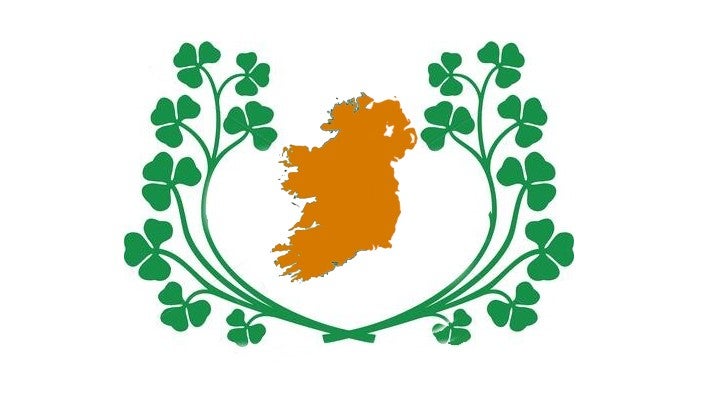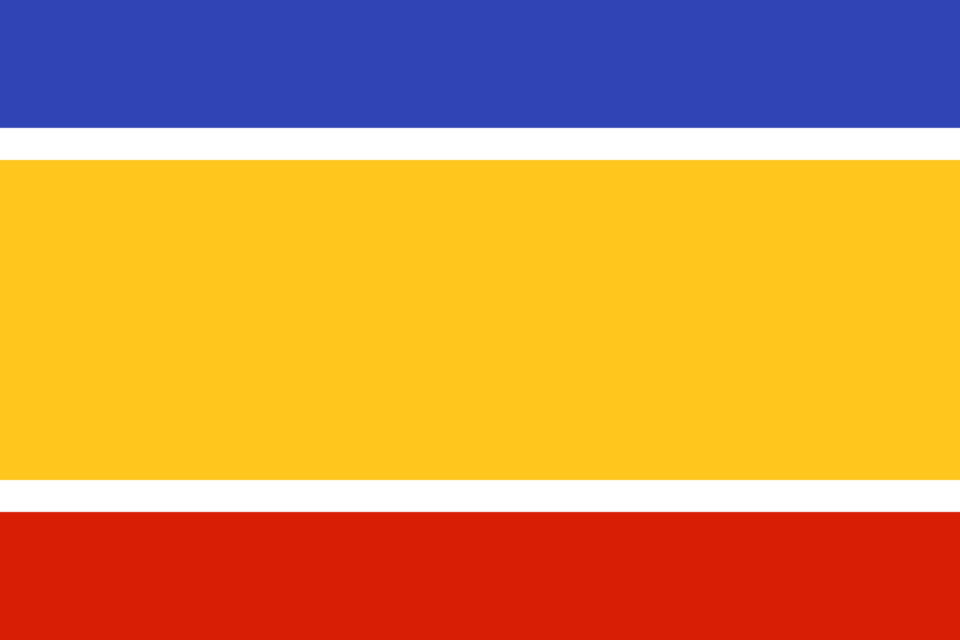Cyprus Mail 11 September 2022 - by Nick Theodoulou
 |
| Disy leader Averof Neophytou with European parliament president Roberta Metsola and the daughter of the designer of the Cyprus flag Nigun Guney |
But it’s special in many ways and the source of much creativity among vexillologists
What would the Republic of Cyprus flag look like if ice caps melted and sea levels rose by 70 metres? Or if history had taken a different course and the island instead became a Greek republic – or a communist people’s republic? What may the future flag of a united island be?
And, as used in a reunification campaign last year, what does the flag look like when only using areas under the government’s control?
An online community of over 500,000, on social media platform reddit and elsewhere have toyed around with such ideas and drawn on the island’s rich and varied history to concoct counterfactual flags.
The island’s flag since 1960 has long fascinated the vexillology community – flag and symbols experts – for its distinct look, with one professional telling the Cyprus Mail that it breaks the unofficial ‘rules’ of flag design, which make it stand out.
Graham Bartram, chief vexillologist at the Flag Institute, who worked with the UN high representative to Cyprus during the 2004 referendum, explained the intricacies of flag design.
“One of the distinctive features of the Cyprus flag is its white background – that’s quite often avoided by countries and we call the white and yellow ‘metals’, because they’re silver and gold, and there’s a ‘rule’ that you don’t put those two together,” Bartram said.
He explained that the reason for that is to do with contrast: The yellow and white don’t show up very well against each other – but of course Cyprus uses the third metal which is copper (the Romans named it after the island), and the most recent version of the flag does a better job of this – it does show up.
For decades, suppliers had not been keeping to the 1960 specifications using yellow instead of orange (for copper) – forcing an irritated government official to begin a campaign in 2005 to get manufacturers to adhere to the copper C144 and olive green C336 for the olive branches.
“By some peoples’ rules it shouldn’t work and yet it does,” he said – pointing to another unofficial rule: that a flag should be simple enough so that a child can draw it.
That brought back some memories: My class during one of the earlier years of primary school was asked to draw the Cyprus flag and much to the teacher’s chagrin, and the puzzlement of many students, the results varied wildly. One student coloured the map in red – you can imagine the teacher’s reaction.
Ismet Guney, the Turkish Cypriot artist and teacher who designed the Cyprus flag, had his proposal adopted on August 16, 1960. It features a map of the island, with two olive branches underneath as a symbol of peace on a white background.
Just last week, Guney’s daughter, Nilgyun Guney, focused on the flag’s symbolism of peace when she met Disy president and presidential candidate Averof Neophytou.
She was gifted a Republic of Cyprus flag on Friday at the meeting – saying that her father would have been honoured.
Some additional flag lore is that Guney later claimed that Archbishop Makarios had promised him £20 a year for designing the flag but he was never paid.
Both the Greek blue and Turkish red were avoided at the time.
Its distinct look has jokingly been referred to as the fried egg flag: The yolk in the middle framed by a bit of garnish, perhaps parsley instead of olive branches.
But perhaps the Cyprus flag is best known for having been – and to some, arguably still is – the only national flag to have the map of the country emblazoned on it. In the original Trivial Pursuit it was even a question.
That has been one of the main features drawn upon by the flag enthusiasts online. Feast your eyes on a reimagined flag of Cuba in the style of Cyprus – I’ve thrown in the US, Texas, Ireland and the UK, too.
Asked about the uniqueness of a flag with the map on it, Bartram pointed out that since the late 2000s the flag of Kosovo also has the nation’s map on it.
There’s also some unofficial ones, too, such as the Antarctica one. Another, Bosnia Herzegovina could be considered to have the map on it, although simplified – all you see is a triangle, but it’s based on the territory.
There have been other flags, too, Bartram says – referring to the joint Korean one used in some sports events.
However, Bartram explains that one of the reasons it may work particularly well for Cyprus is it being an island.
“If you were to fly over in a helicopter or look at a satellite image you would see that shape – which would not be the case for countries such as France,” he said.
“And then you get into the issue of what detail one will use – if we make the flag bigger, do we also have to make the outline more accurate? With all its little bays and little islands off the coast?” he explained.
And while the Cyprus flag dates to 1960 – its initial form was simply an orangey outline of the island, the rest in white.
Its uniqueness may have even been surpassed by a previous proposal by the then British colonial government. It is claimed that one proposal for the Cyprus flag was for it to have the white background we all know today – but, bizarrely, with a large capital orange ‘K’ at the centre. That is thought to be an attempt at a symbol of unity, as the name Cyprus begins with a ‘K’ in both Greek and Turkish.
A new flag was designed under the terms of the Annan Plan. Unlike the current official flag, this version consciously incorporates colours representing Greece and Turkey.
Bartram admits that despite having worked with the UN high representative to Cyprus during the 2004 referendum period on the section of the constitution of the flag, he didn’t particularly like the proposed design.
“They asked me to help when they were drafting the parts of the constitution to do with the flag – flags are obviously an emotive subject and one of the things they wanted to make sure was that there was freedom of expression, so we had to make sure there was a constitutional right to fly not just the national flag – but, uniquely, also the national flag of two other counties: Greece and Turkey,” he said.
He explained that was to give people the option to celebrate their cultural origins and yet at the same time emphasising that they are Cypriots, which is obviously difficult.
Indeed, many still wonder what the future flag of a united Cyprus may look like – with some armchair vexillologists doing just that.
For others, however, there is a gloomier scenario on the horizon: The event of no reunification. The organisers of the 1Cyprus initiative sought last year to illustrate their point by releasing a flag which showed the map without the occupied areas, the buffer zone and the British bases.
And on that note of the British bases, Bartram departed with some added Cyprus trivia: “Dhekelia and Akrotiri are technically British but not part of the UK, they’re overseas territories but they’re not the same as the other ones – I have a colleague who is very keen on having flags from all the British Overseas Territories and the only ones which don’t have flags are Akrotiri and Dhekelia.
That’s because the agreement in 1960 with Cyprus was that Britain wouldn’t create symbols for them,” he said.
And some food for thought: former president Glafcos Clerides once lamented that “the flag of the Republic of Cyprus is the best in the world because it’s the only one that no one would die for”.






